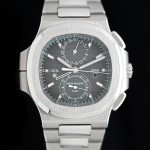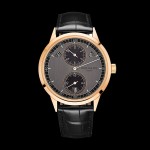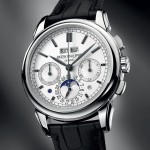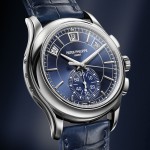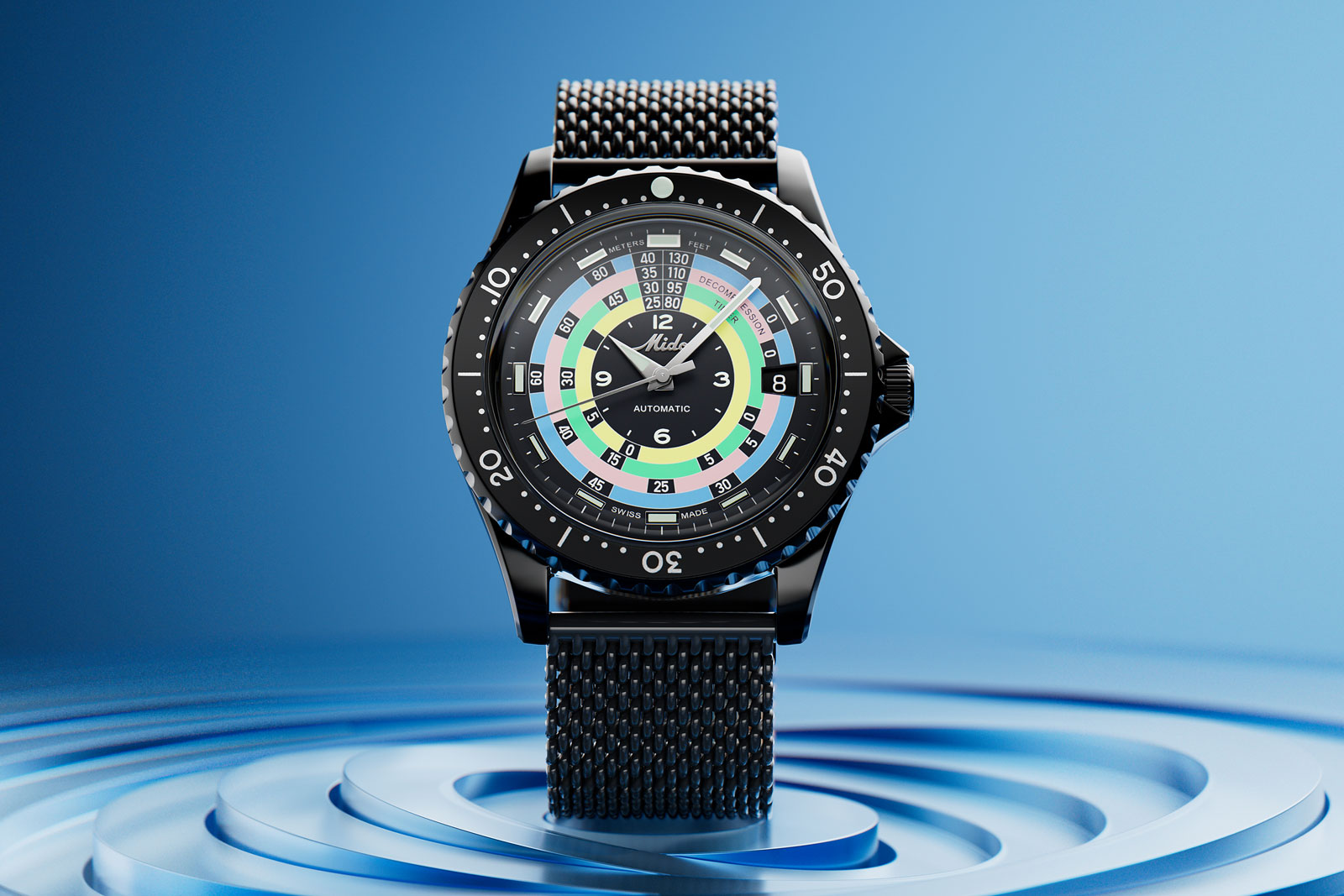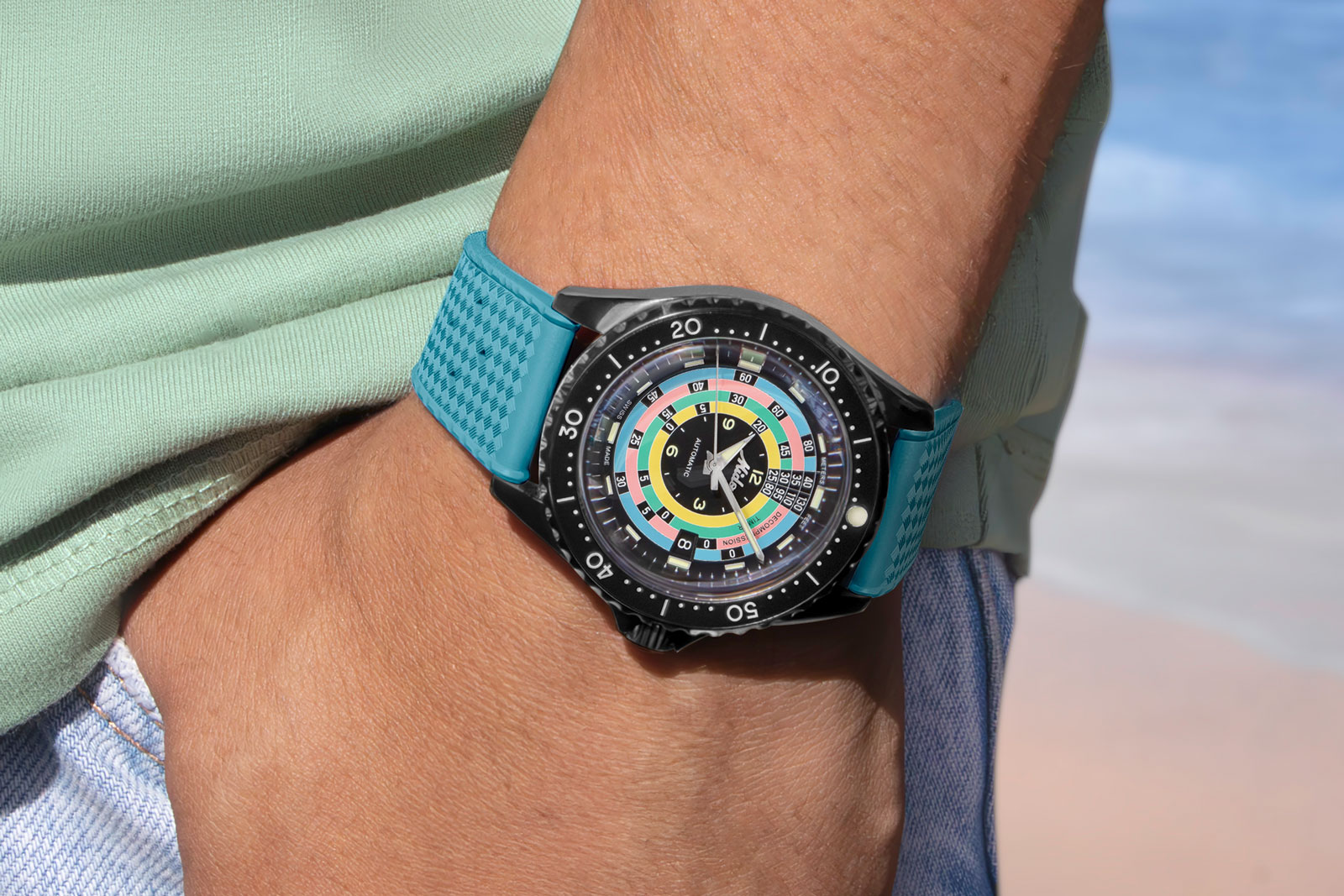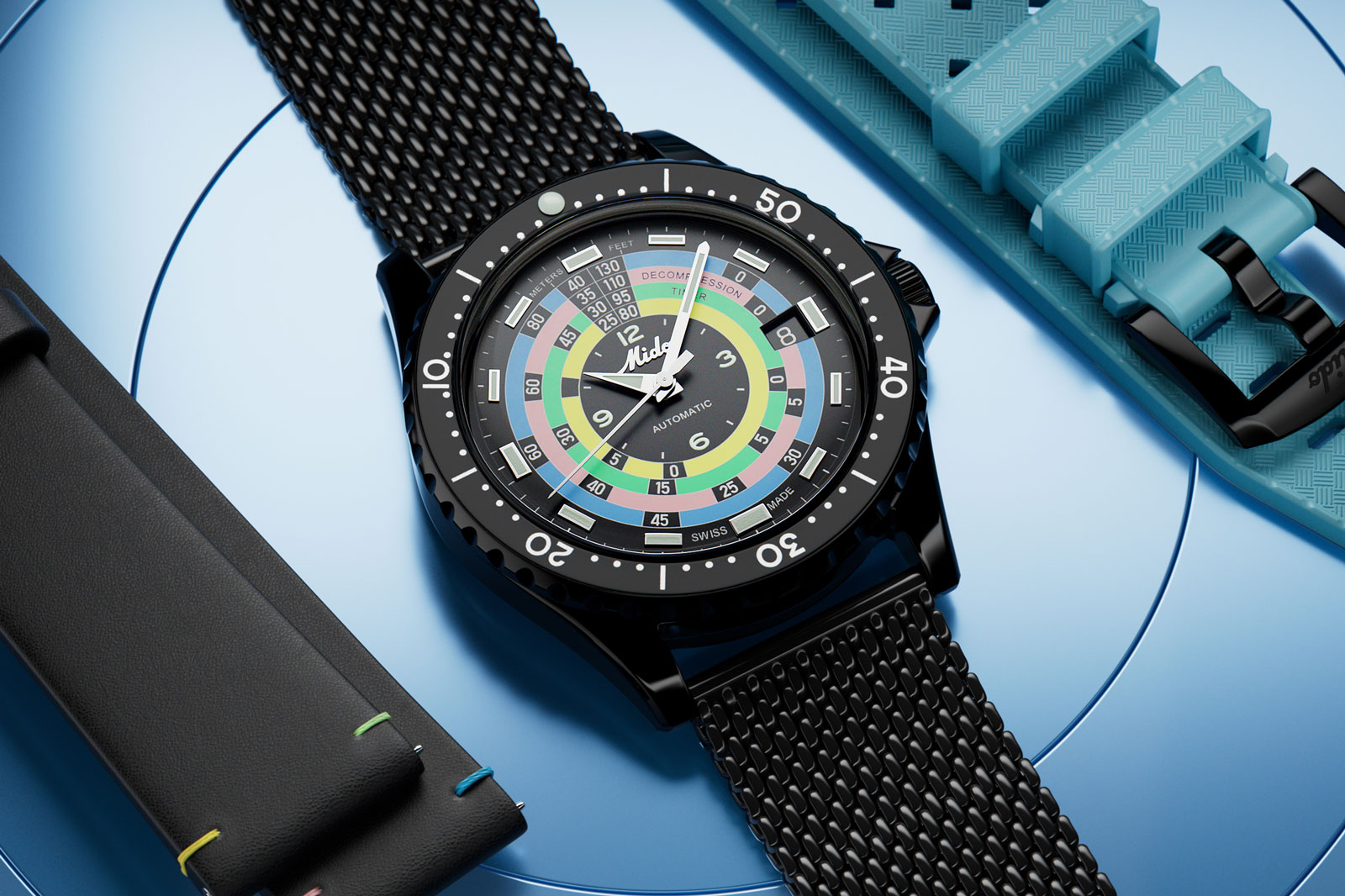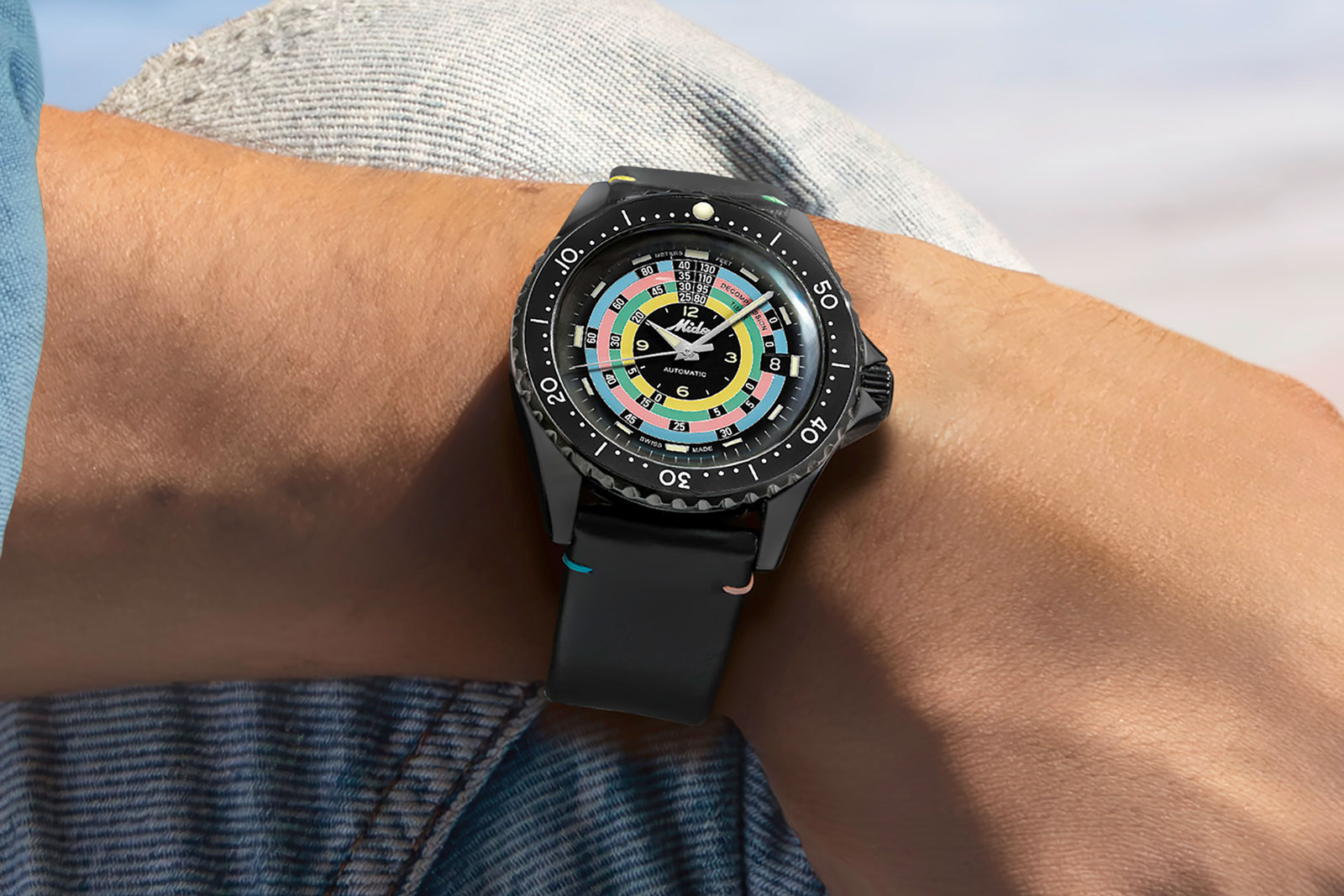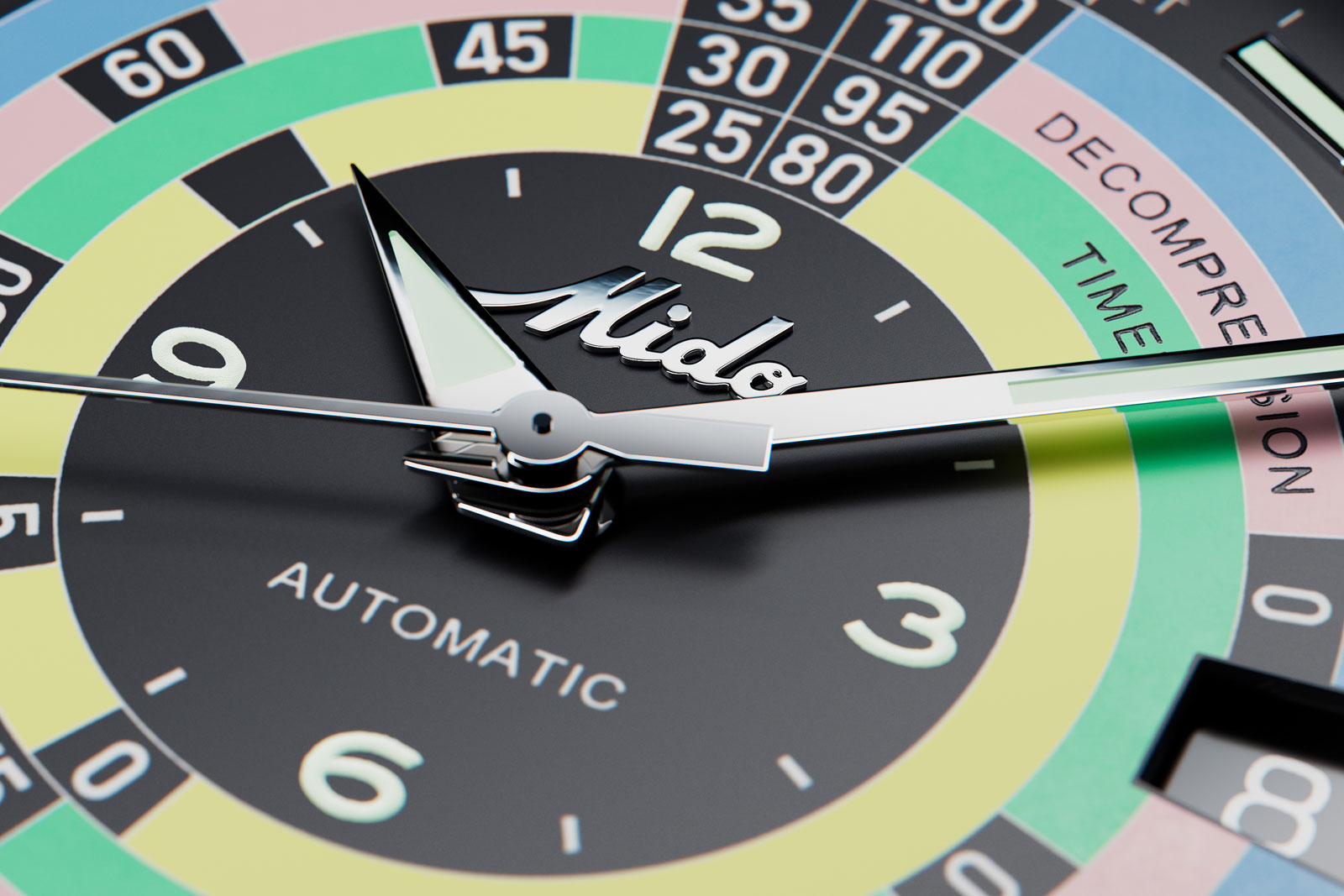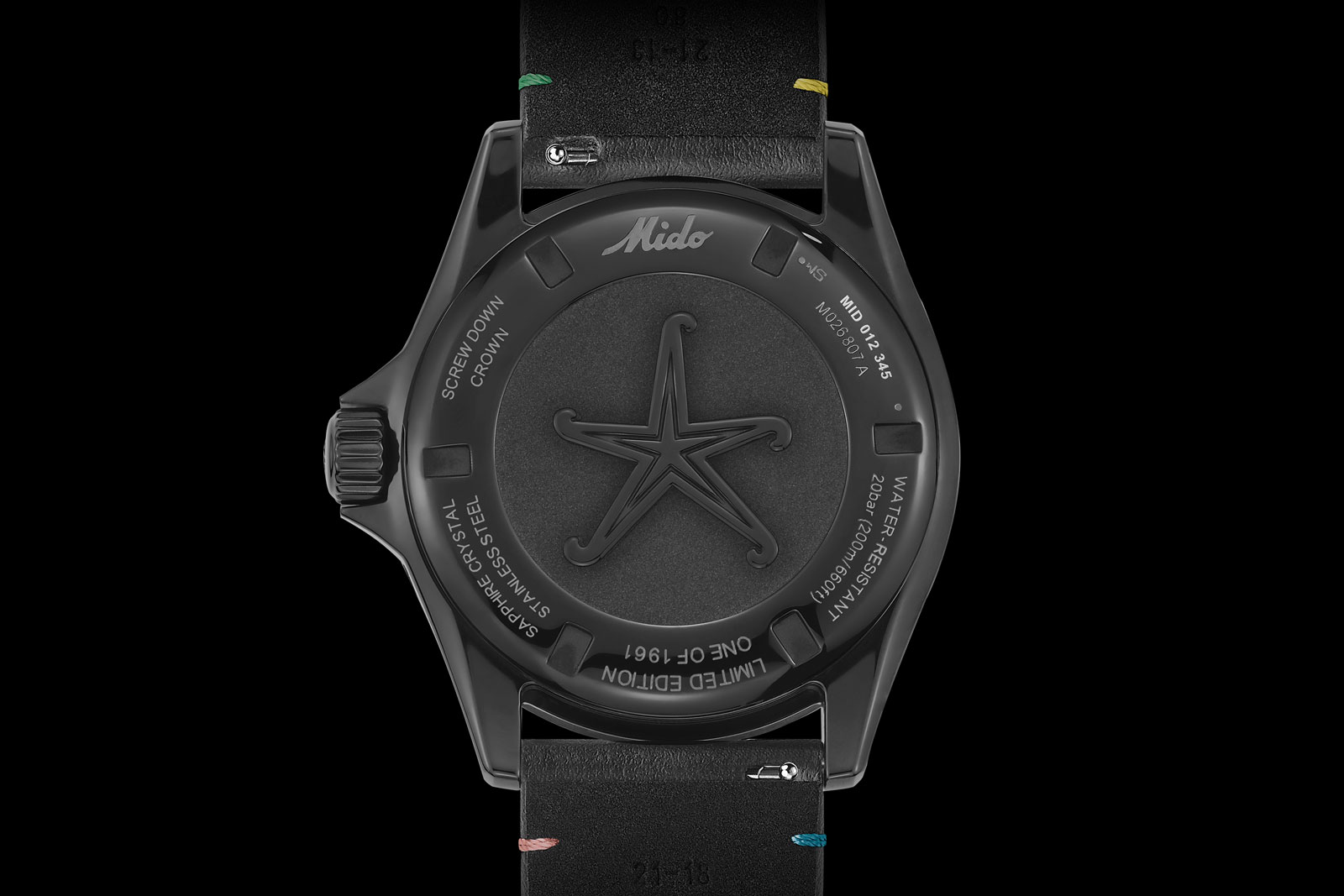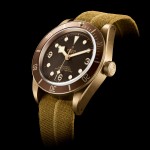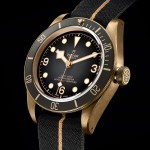In Depth: Patek Philippe Annual Calendar Travel Time Ref. 5326G
Practicality executed well.
The Annual Calendar Travel Time Ref. 5326G is one of Patek Philippe’s most practical watches in the “Compilations” family because it combines two useful functions: a calendar that needs setting only once every four years along with a dual time zone display with double day-night indicators.
Smartly constructed such that the calendar indicators move in sync with the local time hand, the ref. 5326G has a vintage-toned aesthetic on a smartly detailed dial, presented in an elaborately decorated case. All of that, however, is packaged with a hefty price tag.
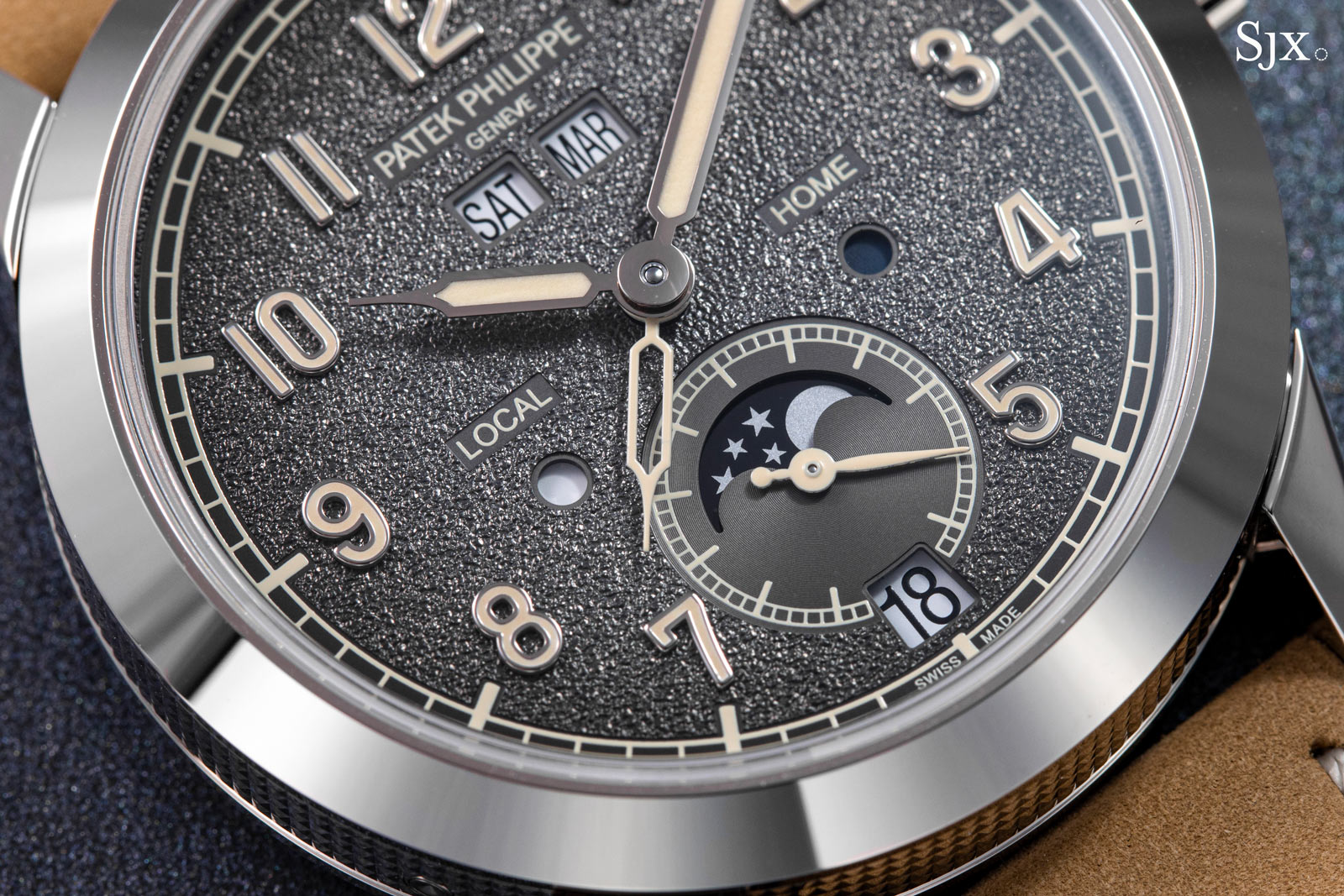
Initial thoughts
Like its sibling the Calatrava ref. 5226G, the ref. 5326G captures Patek Philippe’s latest generation aesthetic, which is not just about design, but fancy execution of the dial and case. Compared to equivalent models from before, the ref. 5326G takes a more elaborate approach to the habillage, with the hobnailed case flanks being an example.
It does, however, still feel like a Patek Philippe. Though it’s relatively large at 41 mm, the case is thin at just over 11 mm, giving the watch an elegant, if wide, profile.
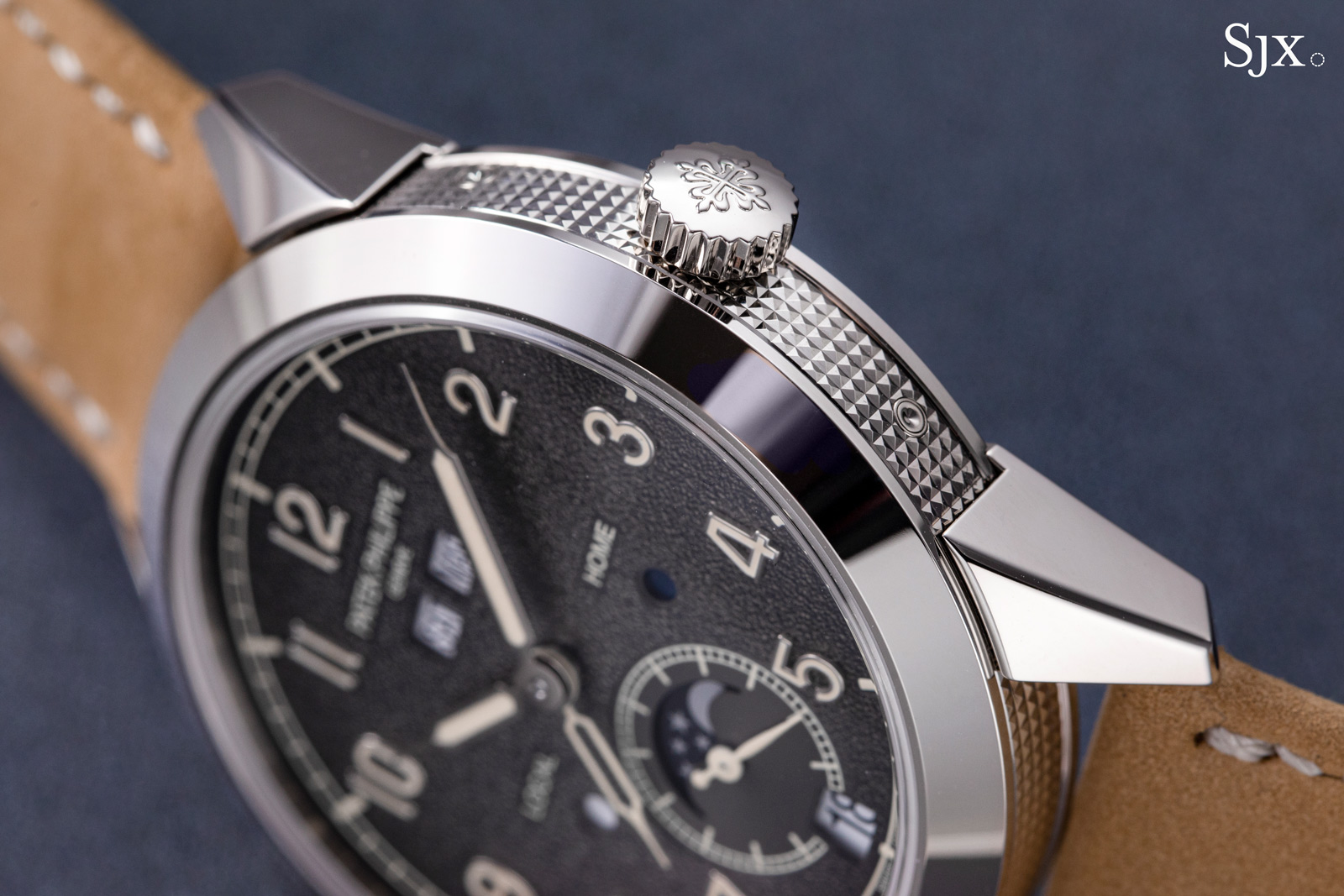
The ref. 5326G also stands out for having a movement from the 31-260 family of large calibres that represent the latest and greatest in self-winding Patek Philippe movements. In fact, it’s one of only five references with a 31-260 movement.
The cal. 31-260 is unquestionably the most sophisticated of Patek Philippe’s automatic movements, and also the most appealing in terms of design with its finger bridges and exposed going train.

The cal. 31-260 PS QA LU FUS 24H
The qualities of the ref. 5326G dictate a price of almost US$79,000. Compared to the rest of the Patek Philippe line-up, the price is fair, more or less, since everything that Patek Philippe does, and does well in its class, is premium priced. The ref. 5235R Annual Calendar costs about US$59,000, and the ref. 5326G gains an additional time zone and calendar synchronisation.
The ref. 5326G is, however, fairly pricey relative to the competition, but the Patek Philippe name and high level of execution arguably make up the difference.
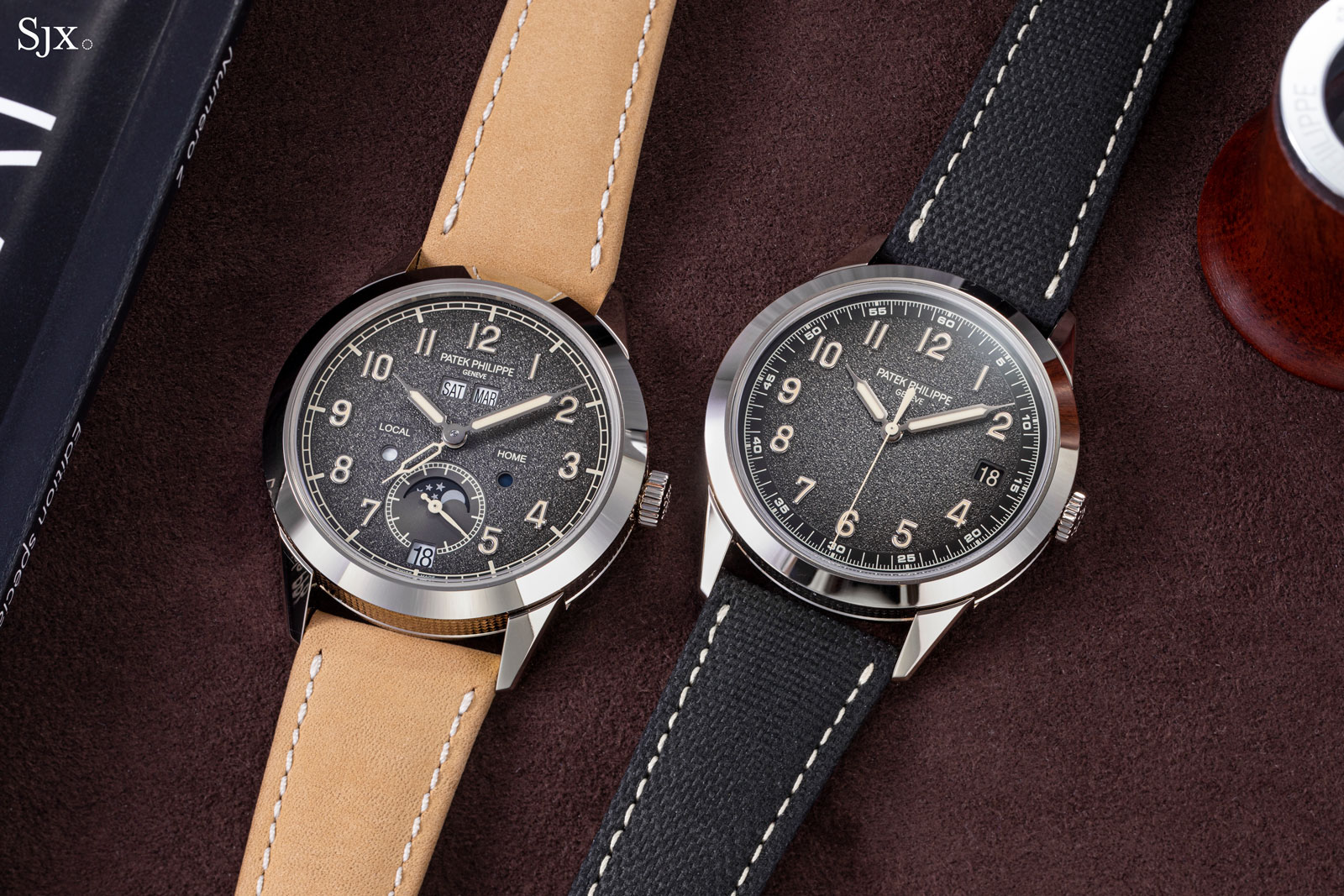
Sharing the same aesthetic and details, the ref. 5326G (left) and ref. 5226G
Functional…
The functions of the ref. 5326G are straightforward and easy to use, for the most part. Both are based on the annual calendar and Travel Time complications found in existing models, but modified for the two functions to interact with each other.
Everything is laid out symmetrically and logically on the dial. The twin time zones are set via the crown, with the luminous hour hand indicating local time, and the skeleton hand indicating home time. When not required, the home time hand can be hidden under the local time hand. Each time zone has its own day and night indicator prominently labelled on the dial.

The local time hand can be set backwards and forwards in one hour steps, as is convention for dual time watches. Crucially, the calendar indications move in sync with the local time hand – backwards and forwards – so the calendar is always displaying the local day, date, and month.
This synchronisation is thanks to a patented addition to the mechanism, specifically the addition of a double-sided rocker and tension spring that nudges the date wheel back and forth when necessary. Though the movement makes use of several Patek Philippe patents, this back-and-forth mechanism for the calendar was evidently conceived for the ref. 5326G as it is not found in any other model yet.
The only shortcoming in the functionality of the ref. 5326G is arguably the calendar setting that still relies on various recessed pushers in the case band. This means a stylus is needed to set the calendar, which makes it a fiddly process that is not easily accomplished on the go. That said, the synchronisation of the time zones and calendar imply the watch should not need to be set on the go.
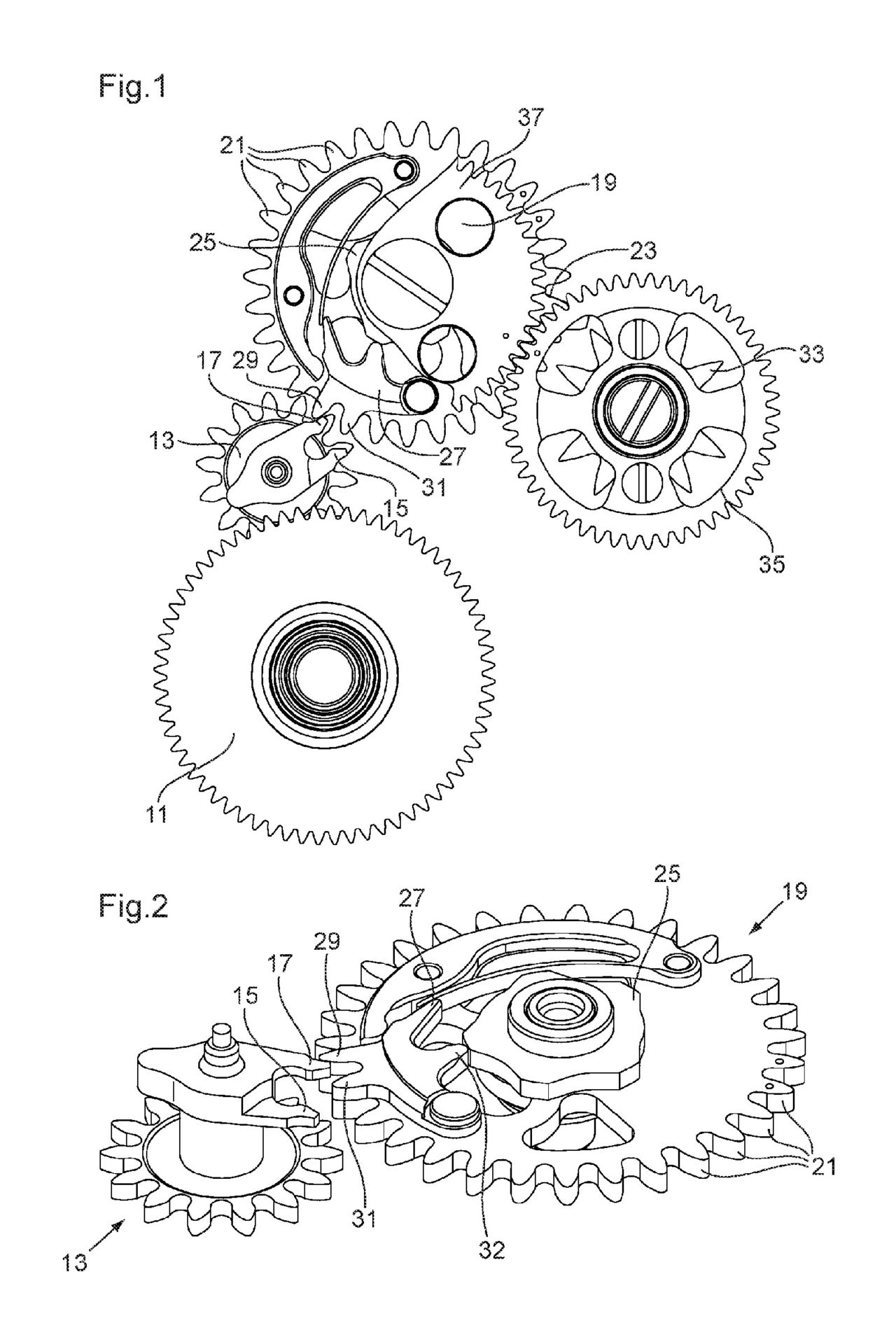
The back and forth mechanism for the annual calendar. Diagram – Patek Philippe patent
And well dressed
Habillage translates literally as “dressing” and is industry speak for the external parts of a watch, namely the case, dial, crown, and bracelet. Like many of the newer Patek Philippe models, the ref. 5326G is well dressed. While the faux-vintage style might not appeal to everyone, the attention to detail is evident. That’s due in part to Patek Philippe’s high level of vertical integration that also include dial and case making subsidiaries.
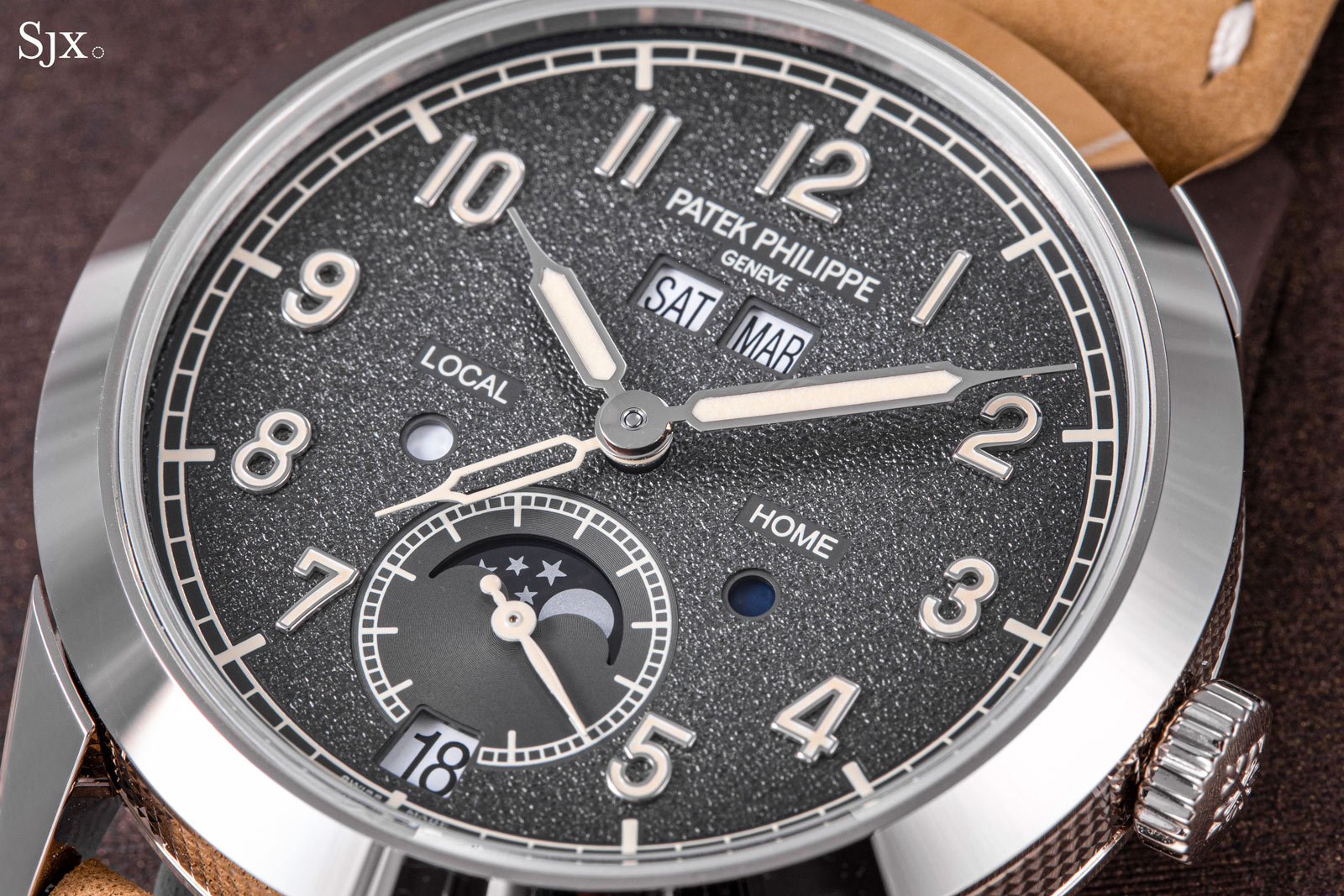
Despite the military-esque dial, the case has a fine design and decoration. Like most non-sport models, it is entirely polished.
The case middle is decorated with Clous de Paris guilloche; according to Patek Philippe, it is actual, traditional guilloche, in other words engine turned on a straight-line engine. The guilloche is unsurprisingly high quality.
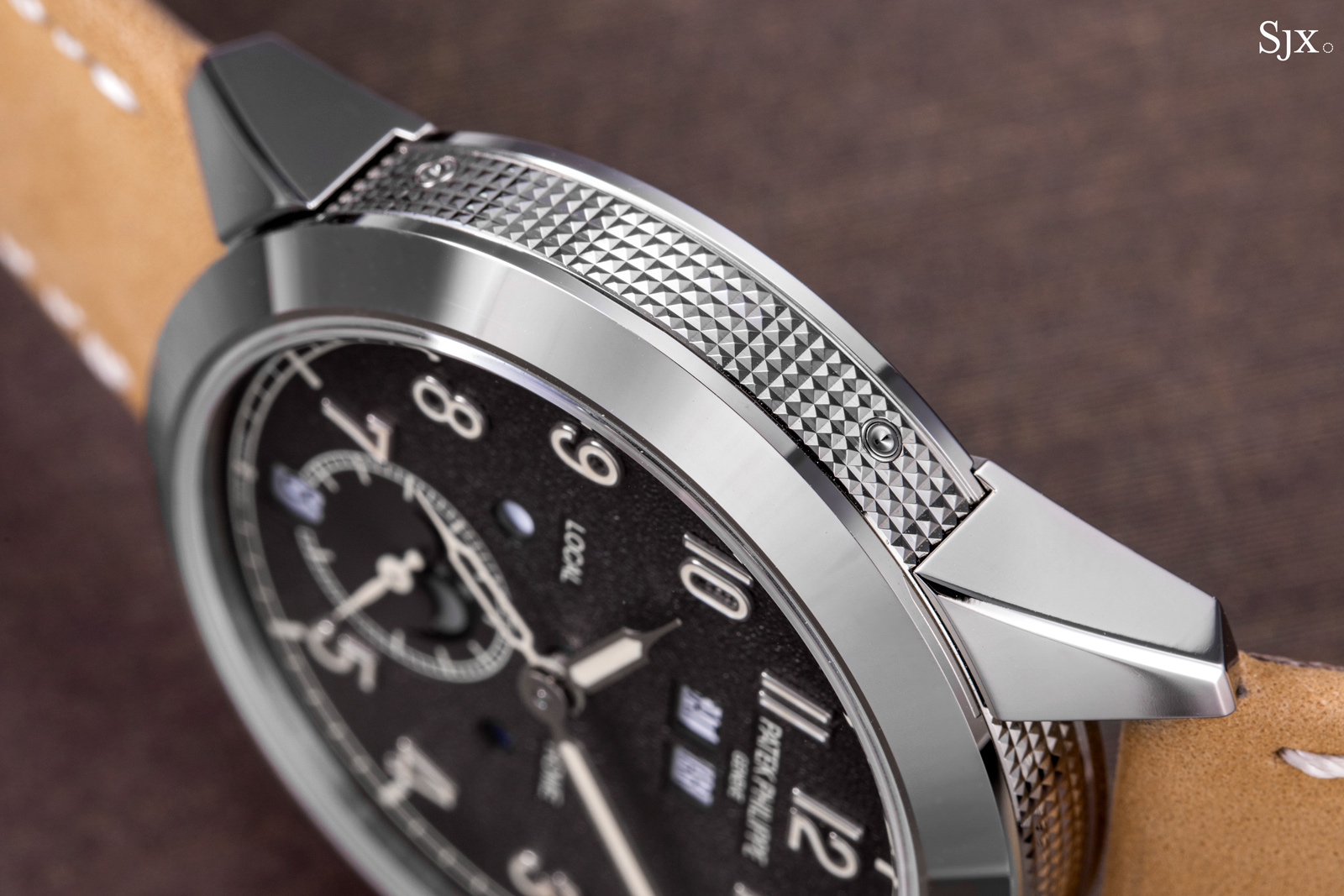
Notably, the entire case band is finished with hobnails, including the portion under the lugs. This is possible because the lugs are actually integral with the case back. As a result, the lugs frame the case at four points but are only physically connected to the back. The tolerances of the case are narrow enough that this is not obvious on the wrist, but more easily discernible on the case profile.
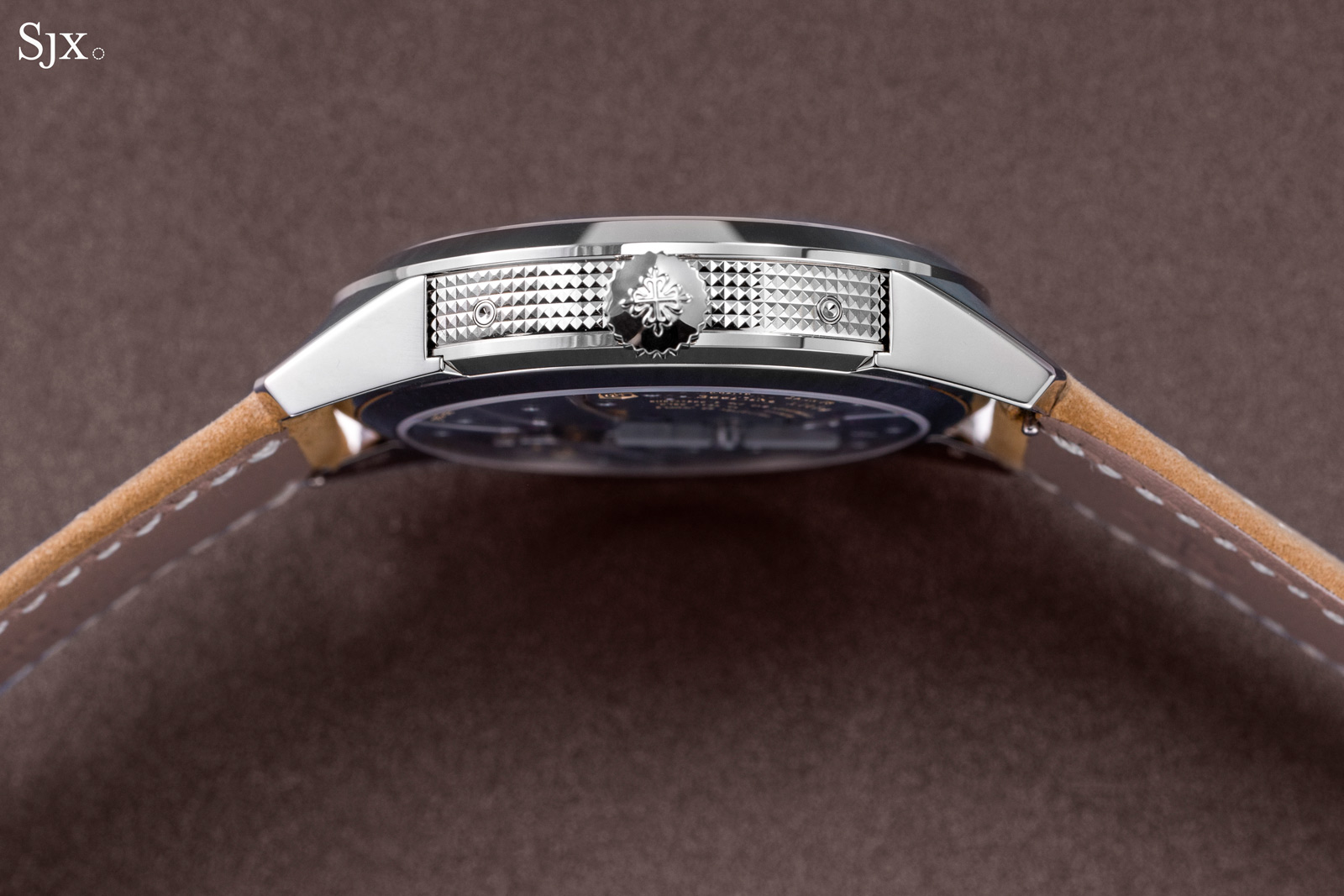
The dial is more retro than the case, with a pronounced vintage-military aesthetic of large Arabic numerals, a railway minute track, and syringe hands.
The look is fairly generic early- to mid-20th century, but this style can be found on several (very) rare vintage Patek Philippe wristwatches, most notably the ref. 565 “Night Watchman” that sold for over CHF320,000 in 2016.
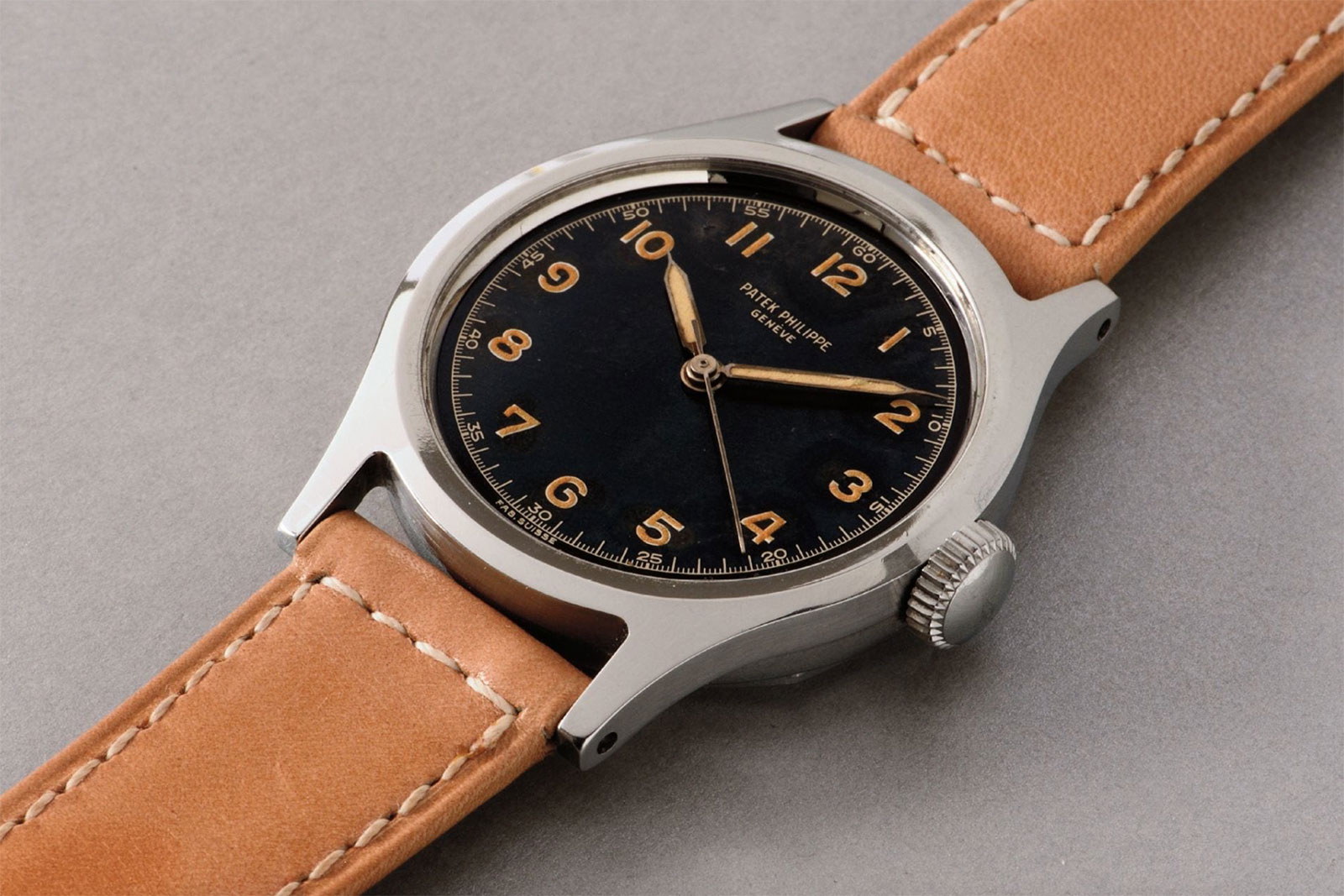
The ref. 565 dating from 1947 that was reputedly gifted by Patek Philippe to its factory’s night watchman in the 1960s. Image – Phillips
The dial design may be inspired by no-frills military watches, but the execution is upscale. The applied numerals are solid gold, as are the hands. The dial itself is likely brass as is convention, and it’s stamped to create a pronounced, granular texture.
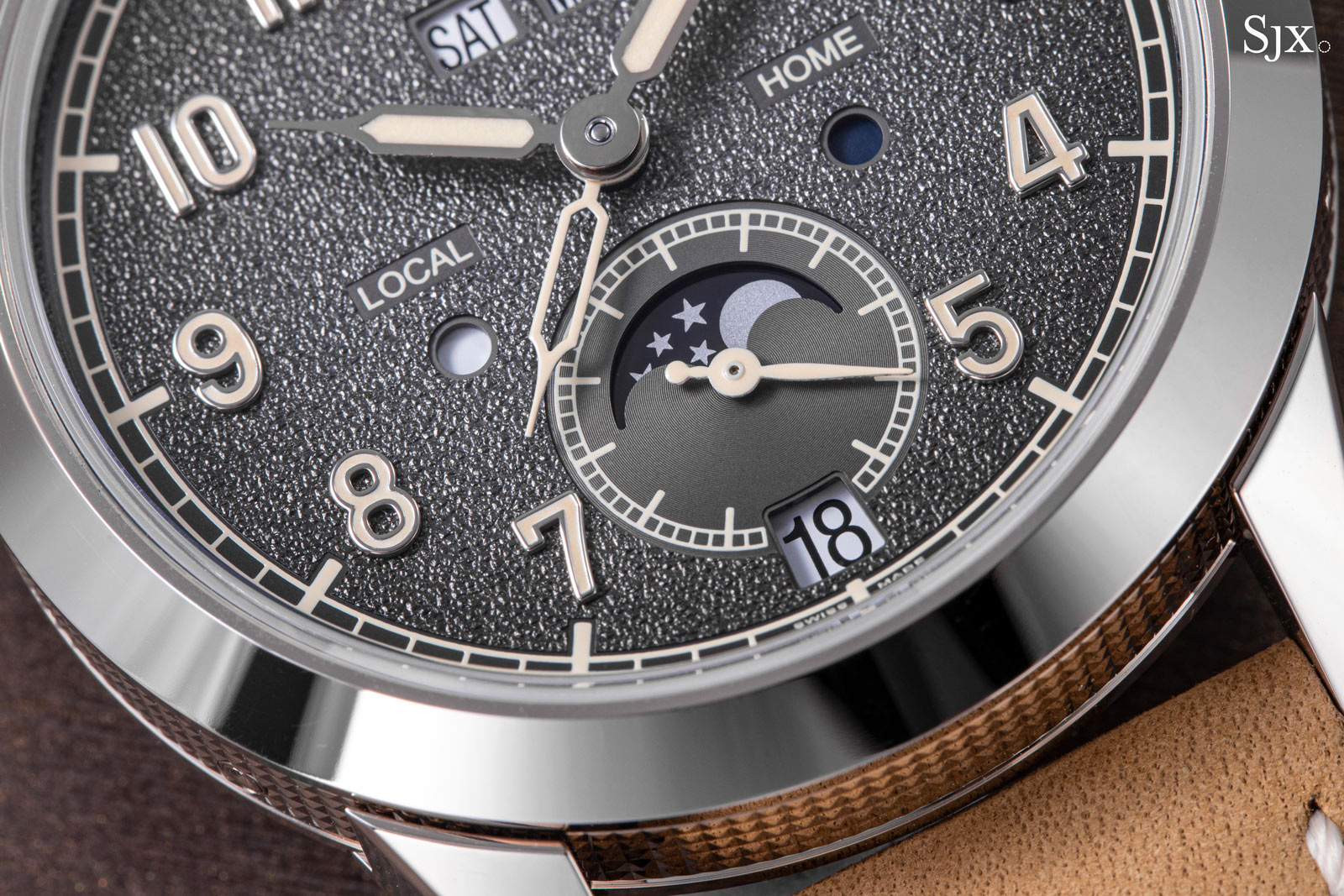
All of the details on the dial are precise and refined to a degree that is as good as it gets for a large-scale manufacturer like Patek Philippe. The only element missing is probably a more interesting moon phase; the moon phase employs the stock disc found on other models and it looks flat compared to the rest of the dial.
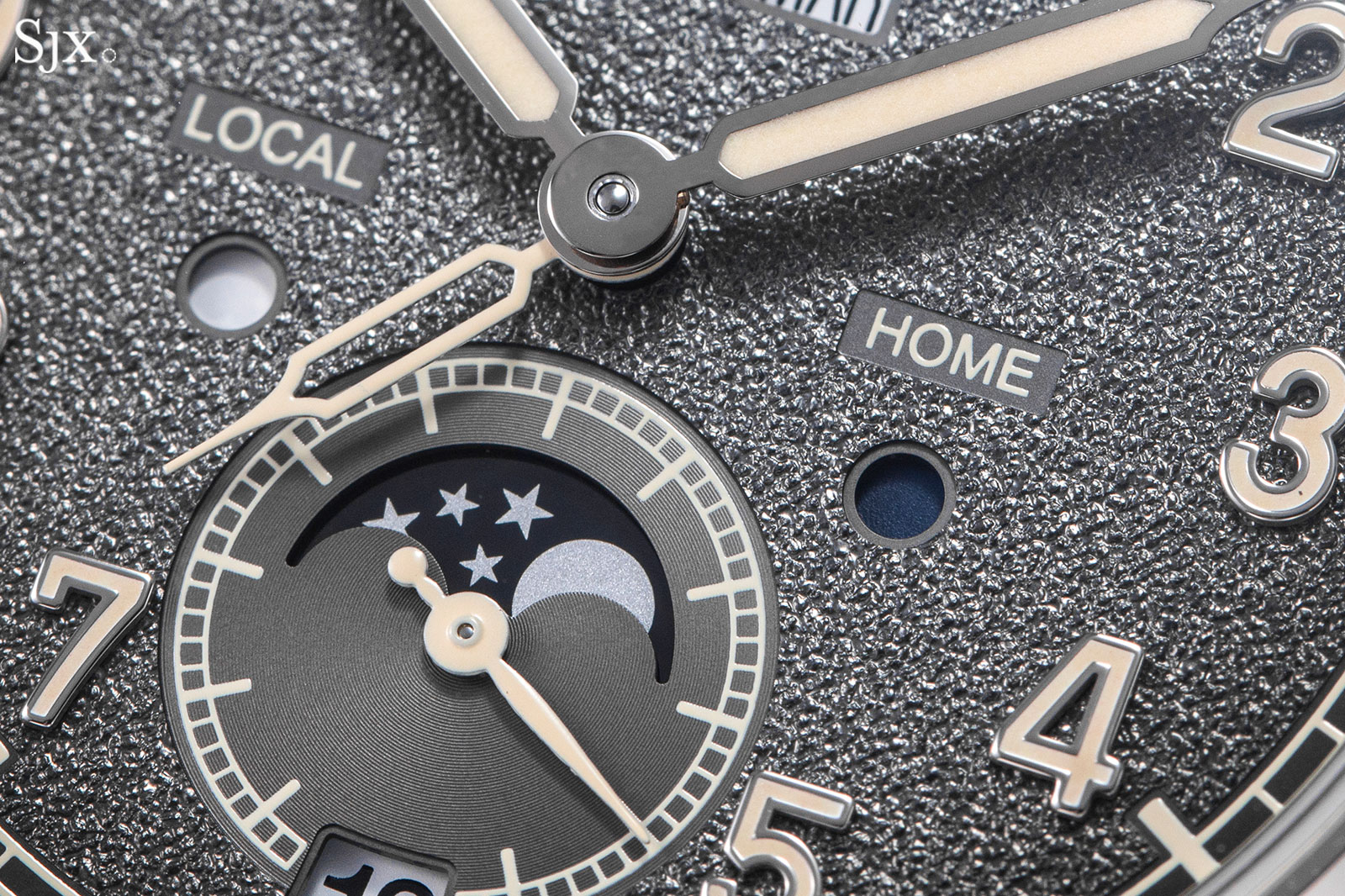

The precision of the dial is high as can be seen from the apertures for the day-night indicators
The ref. 5326G is powered by the cal. 31-260 PS QA LU FUS 24H, with all of the suffixes referring to the various complications added on top of the cal. 31-260 base movement. Now the brand’s flagship automatic movement, the base movement is also found in the ref. 5236P In-Line Perpetual Calendar.
The base cal. 31-260 is over a decade old, having made its debut in the ref. 5235G Annual Calendar Regulator in 2011. Still, the cal. 31-260 is a latest-generation movement as its predecessor, the cal. 240 of 1977, is almost 50 years old. (This year’s ref. 5330G World Time employs the newest variant of the cal. 240.)
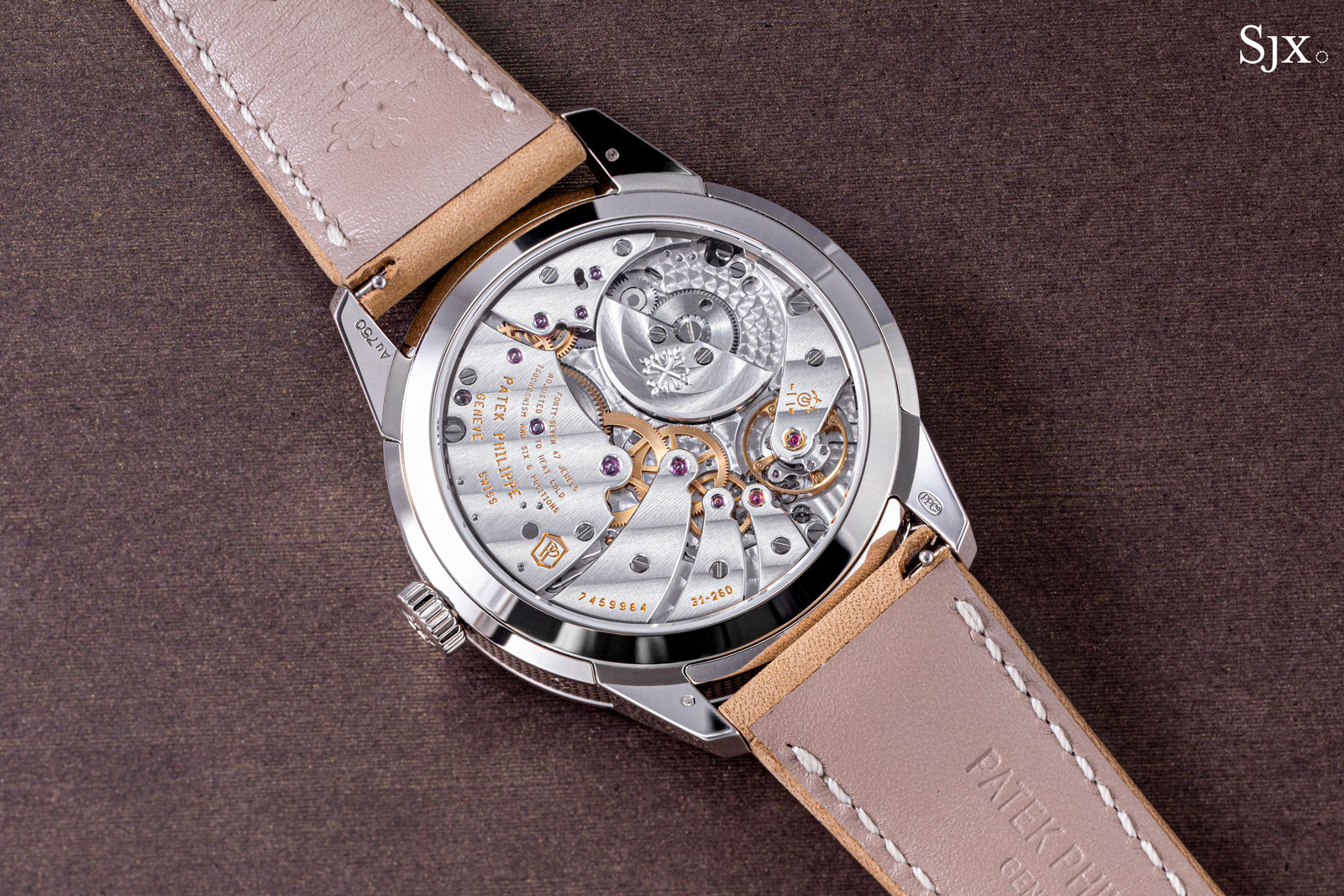
The cal. 31-260 a large movement and fits modern cases well, but also thin in the typical Patek Philippe style, explaining the slimness of the case.
The diameter of the movement gives it an attractive layout, allowing the bridges to be arranged in a curve that goes from the barrel to balance wheel. Though it is a modern movement, the finger bridges for the going train give it a vintage flavour that brings to mind pocket watches.
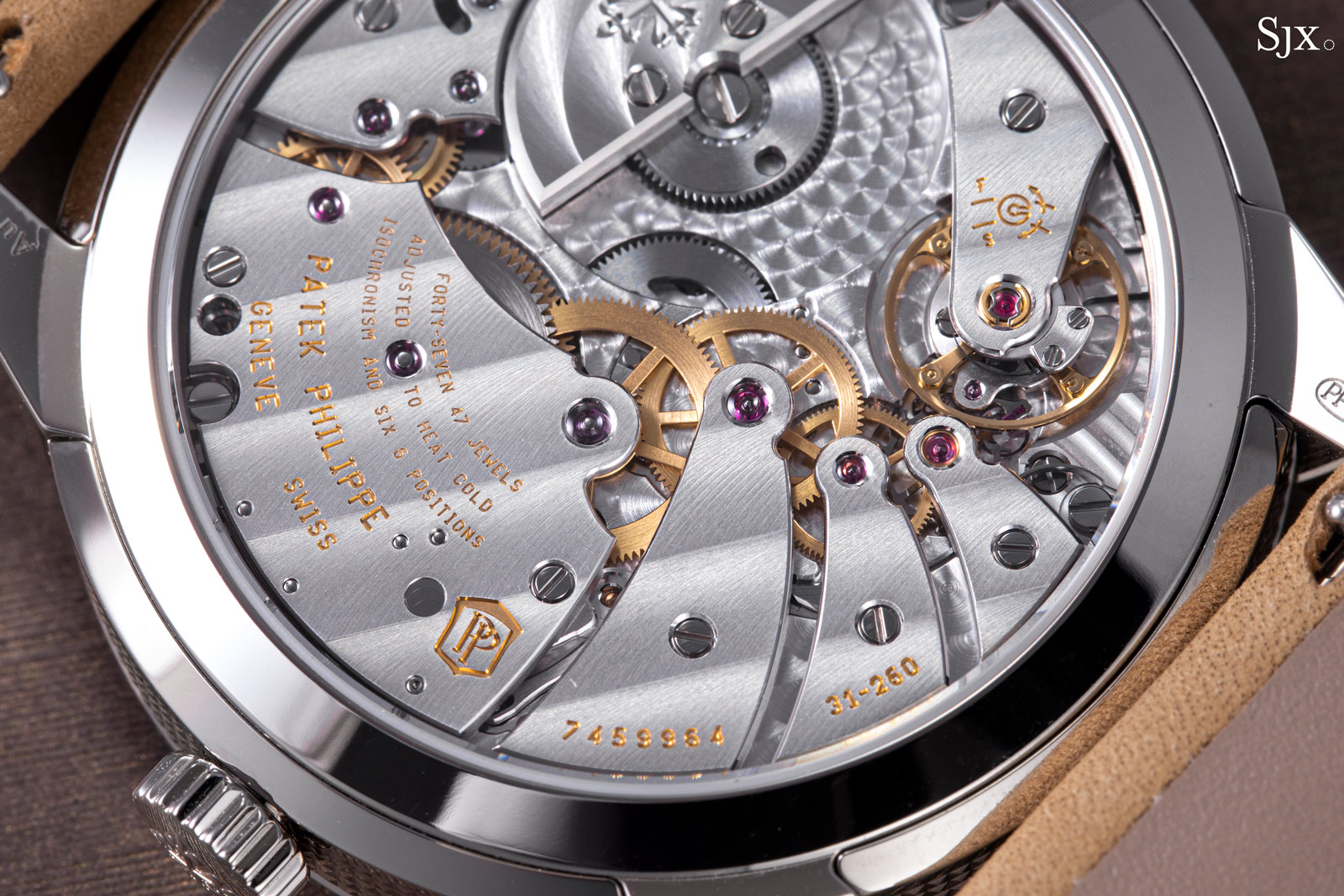
One explanation for its thinness is the platinum micro-rotor that sits on a ball bearing containing ceramic balls. The rotor sits on the same plane as the barrel, however, which limits the size and number of mainsprings. As a result, the power result is 48 hours, respectable for a complicated watch but short by today’s standards, where three days is increasingly the norm.
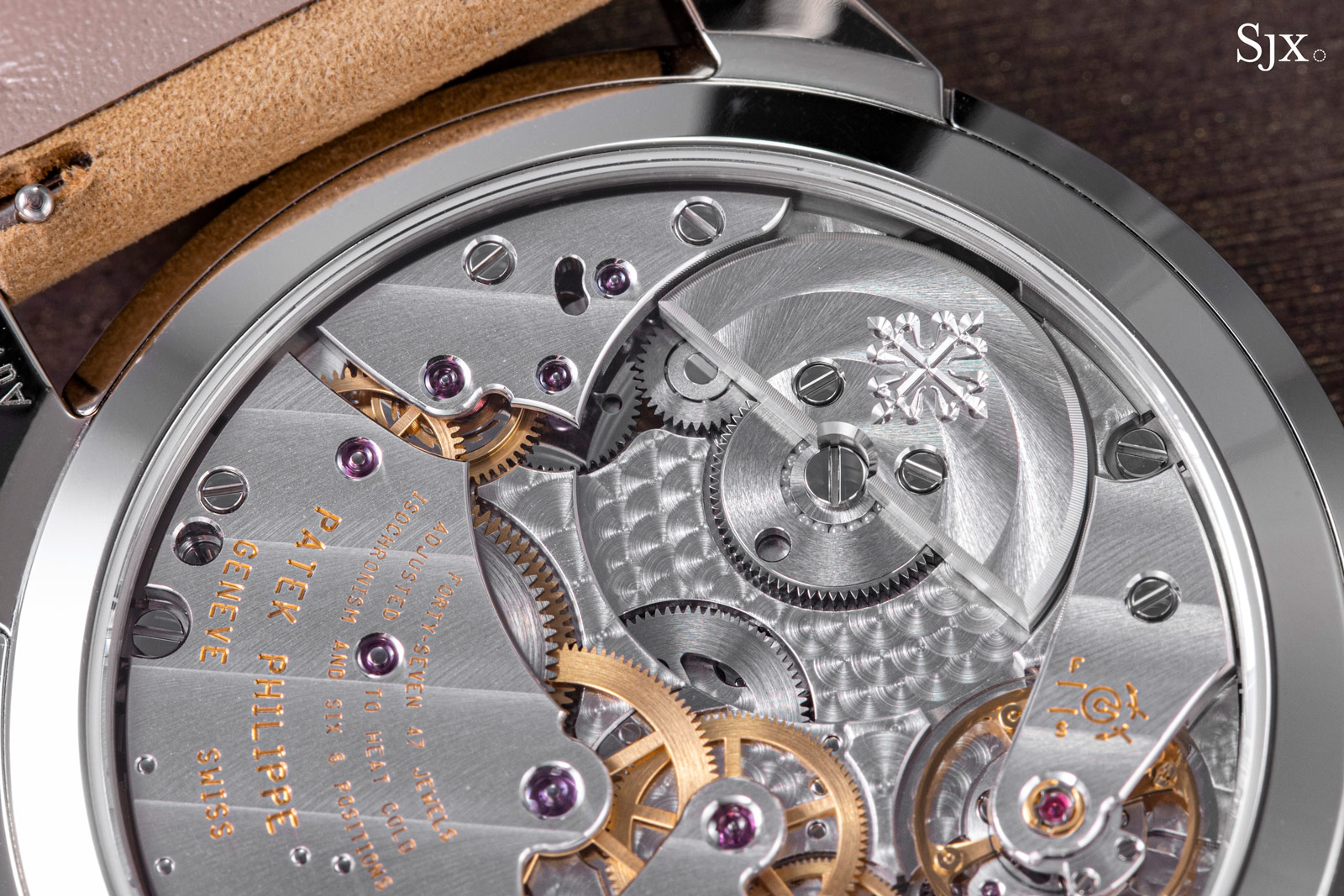
As with the cal. 30-255 PS, Patek Philippe’s latest manual-wind movement found in the ref. 6119, the cal. 31-260 has been designed to be appealing in terms of aesthetics and decoration. Various details have been designed into the movement to allow for greater decorative expression, no doubt to cater to the modern collector obsessed with high resolution photos online.
The decoration is finely applied, even when examined up close. It’s industrial-artisanal of the highest quality, with machine-applied decoration that’s refined by hand. The neatness and precision of the finishing is notably impressive.
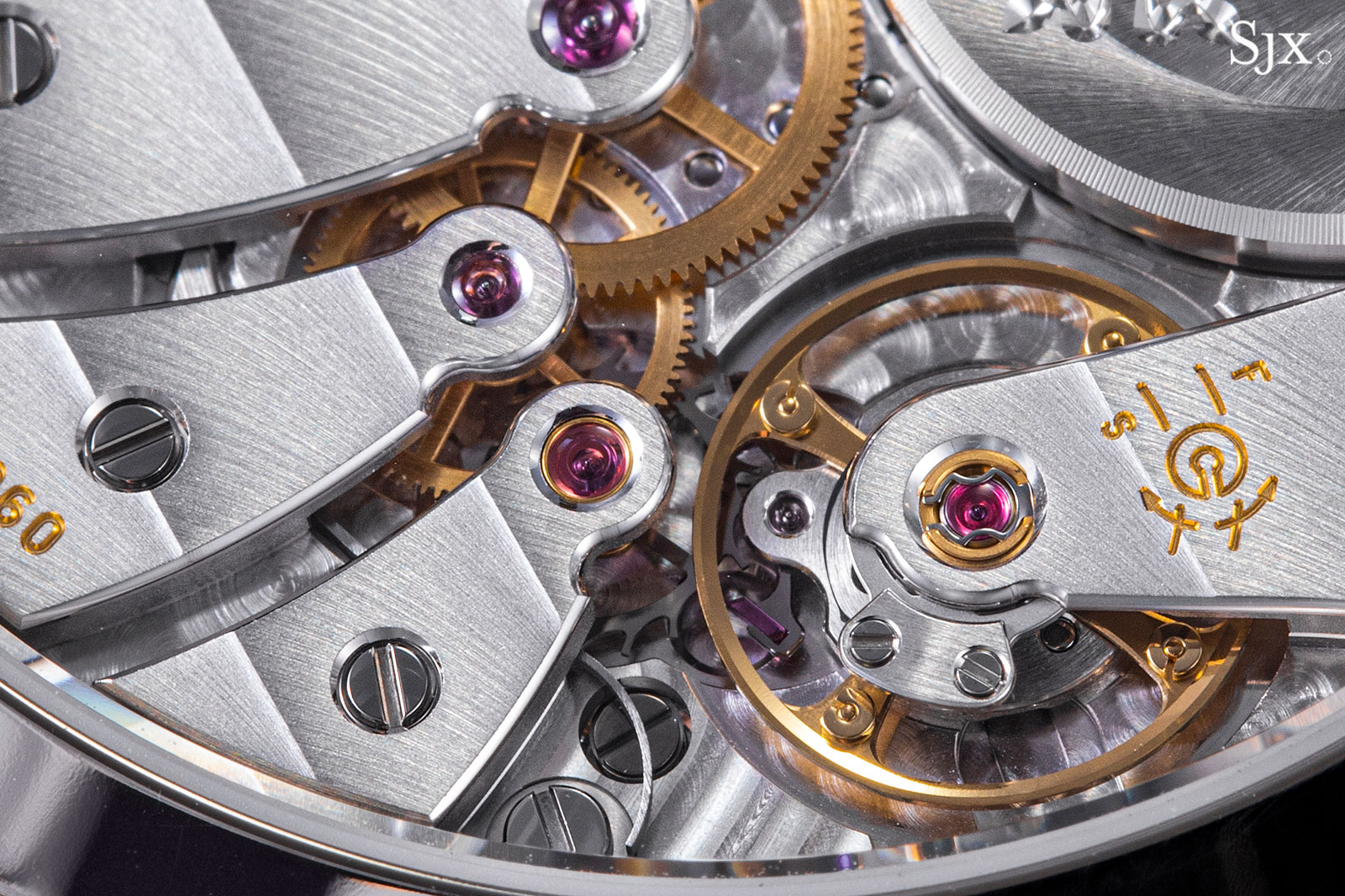

Concluding thoughts
The ref. 5326G is a useful watch that exhibits a high quality of make inside and out. The attention to detail is high, resulting in fine details that illustrate why Patek Philippe is arguably the first amongst equals for industrial-scale haute horlogerie brands. The quality and brand name, however, come at a steep cost.
Key facts and price
Patek Philippe Annual Calendar Travel Time
Ref. 5326G-001
Diameter: 41 mm
Height: 11.07 mm
Material: 18k white gold
Crystal: Sapphire
Water resistance: 30 m
Movement: Cal. 31-260 PS QA LU FUS 24H
Functions: Hour, minute, seconds, annual calendar with moon phase, and twin time zones with day-night indicator
Winding: Automatic
Frequency: 28,800 vibrations per hour (4 Hz)
Power reserve: 38-48 hours
Strap: Black calfskin with embossed pattern, additional strap in beige calfskin with nubuck finish
Limited edition: No
Availability: Now At Patek Philippe boutiques and retailers
Price: US$78,950
For more, visit patek.com.
Back to top.

